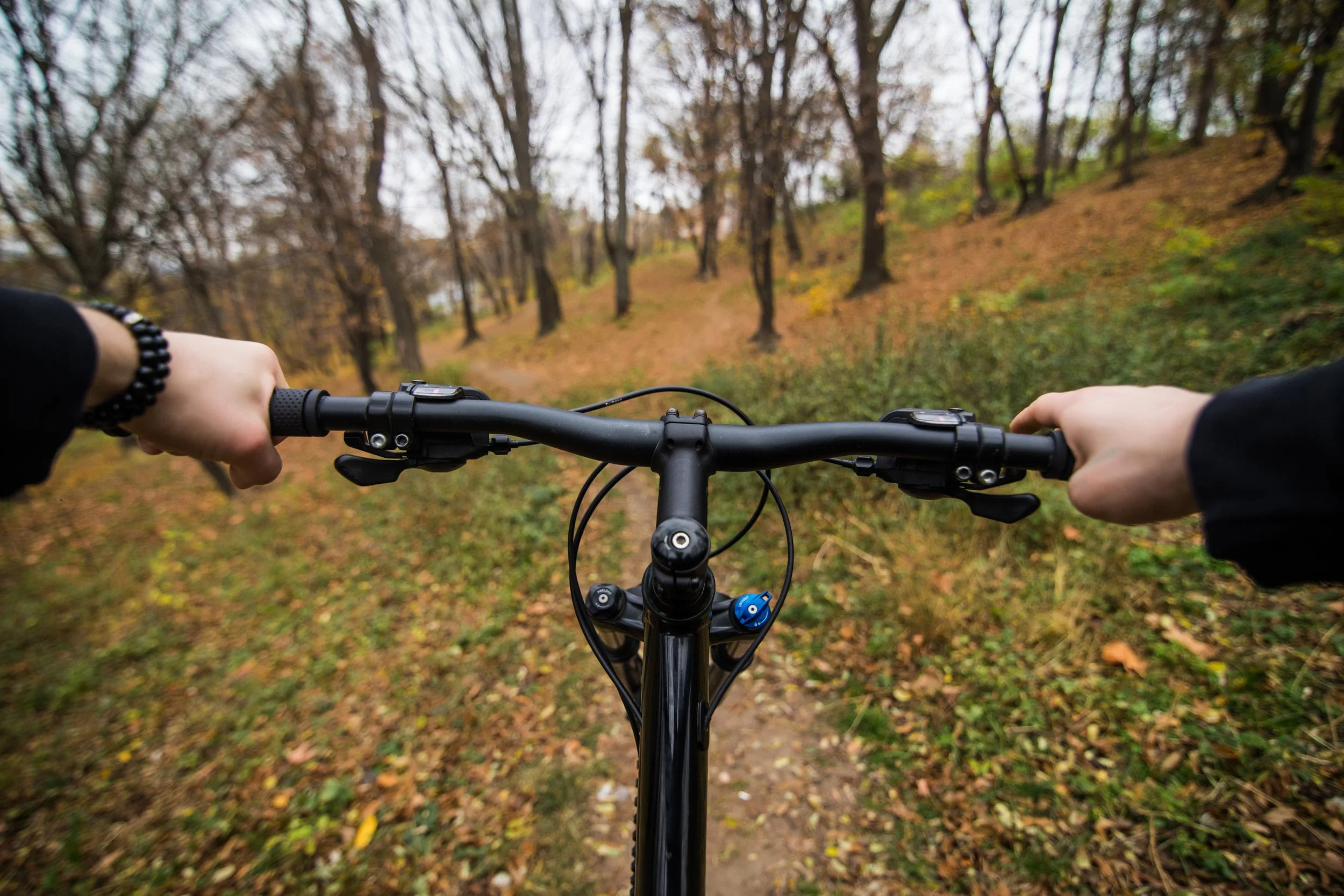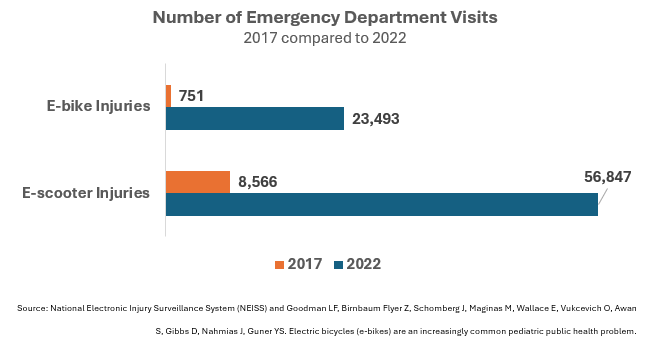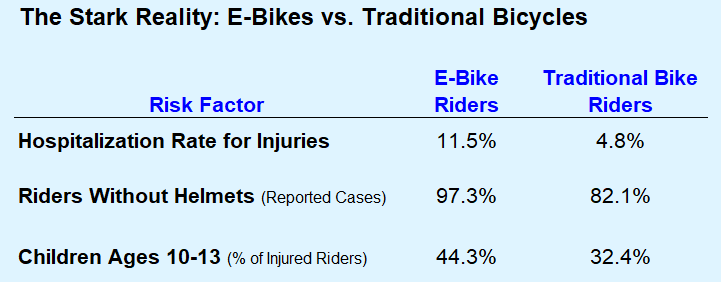Charged and Dangerous? The Youth E-Mobility Boom
The E-mobility Revolution
The streets of Bay Area towns and cities are transforming as e-bikes and e-scooters become the vehicles of choice for a new generation. These devices offer children and teens—some as young as 8—independence, convenience, and transportation for school, social activities, and errands.
But this freedom comes at a cost. With injury rates climbing 29% in a single year and speeds reaching 20+ mph, these are not toys but powerful vehicles.
As parents and communities struggle to keep pace with rapid adoption, the e-mobility boom presents both unprecedented opportunity and serious safety concerns, particularly for the youngest riders.
____________________
The Appeal
E-bikes and e-scooters offer youth compelling advantages: independence, easy travel over longer distances, increased speed allowing for reduced travel times, and the ability to navigate hills without getting tired.
These devices also carry undeniable social currency with their compelling designs and technological power. As adoption spreads within friend groups, peer pressure intensifies. The cascading effect is clear—once several children have e-bikes or e-scooters, others want to join in.
Parents benefit too: reduced driving duties and increased unstructured play opportunities for kids. For busy families, these mobility devices offer logistical flexibility while promoting responsible independence.
____________________
The Explosive Growth
Driven by these compelling benefits for both children and parents, e-bike sales in the U.S. have skyrocketed, growing by over 500% since 2018, with youth models representing one of the fastest-expanding segments. Sales of e-scooters are also exploding, with 1.1 million e-scooters sold in 2022, almost 4 times the number in 2019.
During the 2024 holiday season alone, retailers reported that children's e-mobility devices were among their top-selling items, with some popular models selling out weeks before Christmas.
Industry analysts project the youth e-mobility market will continue to experience double-digit growth. This trend has been particularly pronounced in urban and suburban areas where short-distance transportation needs are high but public transit options remain limited or inconvenient.
____________________
The Hidden Costs: Understanding the Safety Risks
While the popularity of these devices continues to soar, the rapid adoption has outpaced safety awareness and regulation. The surge in e-mobility comes with a disturbing trend: injuries increased by nearly 29.2% in the most recent year compared to the previous year.
The most recent six years of data on emergency room visits reveals:
3,000% increase in e-bike injuries
560% increase in e-scooter injuries
More concerning is that children ages 10-13 account for a disproportionate 44.3% of e-bike injuries despite representing a smaller percentage of total riders.
When comparing e-bikes specifically to traditional bicycles, the injury patterns show significantly higher risks, particularly for younger riders:
These statistics tell a troubling story: e-bike injuries are not only more common but significantly more serious. The hospitalization rate for e-bike riders is more than double that of traditional cyclists, likely due to the higher speeds and greater weights involved.
Perhaps most alarming is the helmet usage gap. Among injured e-bike riders, a staggering 97.3% were not wearing helmets at the time of their accidents. This single factor may be the most critical safety issue facing young riders today.
While these statistics are concerning, there are straightforward measures that can dramatically reduce these risks.
____________________
E-Mobility Safety: Three Steps That Save Lives
These three practical measures can significantly reduce injury risk and severity:
Always wear a helmet - The single most effective protection against serious head injuries. Choose one certified for e-mobility devices, not just standard bicycles.
Match device to rider - Select e-bikes and e-scooters appropriate for your child's age, size, and skill level. For example, the Consumer Product Safety Commission (CPSC) recommends that children under the age of 13 should not operate motorized wheeled vehicles (like e-bikes) that can travel faster than 10 mph.
Practice in safe environments first - Master basic handling skills in empty parking lots or quiet streets before navigating traffic or challenging terrain.
Beyond these safety measures, California has established specific requirements for different types of e-mobility devices.
____________________
California's E-Mobility Regulations
The state distinguishes between several classes of devices, each with their own rules:
A notable difference exists between e-bikes and e-scooters in California: while younger children can legally ride Class 1 and 2 e-bikes (with no minimum age requirement), e-scooters require operators to be at least 16 years old and possess a valid driver's license or learner's permit. This creates a significant legal distinction that affects which device families may choose for children under 16.
____________________
Navigating the Balance: The Future of Youth E-Mobility
The e-bike and e-scooter revolution represents a shift toward new transportation options for children and teens. When paired with proper safety practices and adherence to regulations, these vehicles can provide independence and mobility without unnecessary risk. As technology continues to evolve and safety features improve, finding the right balance between embracing innovation and ensuring protection will remain key for families navigating this rapidly changing landscape.





